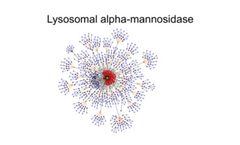In Vitro Skin Models Articles & Analysis: Older
29 articles found
Cancer is a worldwide disease and one of the leading causes of morbidity and mortality today. Traditionally, mouse models have been used for research as in vivo model organisms. However, the zebrafish (Danio rerio), also known as zebrafish, has emerged as an important new cancer model due to its small size, brood weight, and rapid maturation time, complements models that can traditionally be ...
Antibody-drug conjugates (ADCs) are a new class of drugs that combine the advantages of both antibodies and small molecule toxins. Compared with traditional cytotoxins, ADCs have the advantages of strong targeting, less toxic side effects, etc. They can accurately target tumor cells, reduce side effects, and improve the therapeutic effect.ADC drugs are mainly composed of monoclonal antibodies, ...
The process of iPSC differentiation to neurons and neuronal cells is of special importance for neurobiology and related disorders, considering the dearth of clinically relevant in vitro models available for research, drug screening and development, as well as the lack of therapy to reverse neuronal damage. Benefits and advantages of iPSC differentiation to neural stem cells (NSC), neurons and ...
In the vast and intricate world of biology, the development of proteins and antibodies stands as a crucial field of study, driving advancements in medicine, biotechnology, and beyond. From the fundamental building blocks of life to the complex molecules that defend our bodies, these remarkable biomolecules hold the key to unlocking new frontiers in scientific understanding and practical ...
Diabetes, specifically Type 1 and Type 2 Diabetes Mellitus, remains one of the most commonly encountered metabolic diseases worldwide. The complexity and diversity of these conditions necessitate the development of detailed medical models for a comprehensive understanding of the diseases. Over time, Type 1 and Type 2 Diabetes Mellitus Models, Metabolic Disease Models, and generalized Diabetes ...
The field of medical science has long utilized disease models, which are systems simulating the progression and expression of a disease, to better understand various illnesses. These models facilitate the study of disease pathology, identifying underlying mechanisms, and developing potential treatments. In the context of respiratory diseases, numerous models have been developed, with a prominent ...
Host cell proteins (HCPs) are process-related impurities produced by host cells and are typically present at low levels in recombinant biopharmaceutical products. Enzyme-linked immunosorbent assay (ELISA) has traditionally been used to monitor the total content of HCP in the production of therapeutic protein drugs. Now, with the continuous improvement and upgrading of technology, liquid ...
The field of medical science has long utilized disease models, which are systems simulating the progression and expression of a disease, to better understand various illnesses. These models facilitate the study of disease pathology, identifying underlying mechanisms, and developing potential treatments. In the context of respiratory diseases, numerous models have been developed, with a prominent ...
The clinical presentation of COVID-19-related illness ranges from asymptomatic to mild respiratory symptoms resembling influenza infection to acute symptoms including pneumonia requiring hospitalization and admission to the intensive care unit. COVID-19 starts in the upper airways and lungs, but in severe cases can also affect the heart, blood vessels, brain, liver, kidneys, and intestines. ...
Contexte Myasthenia gravis (MG) is an autoimmune disease caused by the presence of antibodies directed against components of the muscle membrane located at the neuromuscular junction. In the majority of cases, these are autoantibodies directed against the acetylcholine receptor (AChR). The origin of the autoimmune response is not known, but thymic abnormalities and defective regulation of the ...
CRISPR/Cas9 gene editing technology has been widely used in many fields since its inception. Gene therapy developed using this technology has huge prospects in the medical and health fields. CRISPR/Cas9 technology enables gene-editing of the genome at specified sites, but a common worry about the technology is that gene-editing occurs where it shouldn't. In recent years, researchers at the ...
BRAF-V600E is an oncogene mutation commonly found in skin, rectal, and lung cancers. The V600E mutation leads to persistent activation of BRAF serine-threonine kinase, which activates the downstream mitogen-activated protein kinase (MAPK) signaling pathway, ultimately leading to uncontrolled proliferation of cancer cells. ...
Summary: Non-union of bone fractures can cause pain and disabilities. Amongst certain fracture types, in specific age groups, the incidence of non-union is over 8% in the United States and over 3.6% of all fractures in the UK. Fracture non-unions have lifelong consequences and a debilitating impact in patients' life. Bone-grafts, allografts and xenograft are currently used to treat bone ...
Both current in vitro and in vivo models used in the development of candidate therapies for the treatment of intestinal diseases have severe limitations. RepliGut®, an in vitro human intestinal epithelial stem cell model, addresses many of these issues and has significant potential to reduce the time and cost of drug development. This model may even help to identify optimal therapies for ...
Researchers from Nanyang Technological University and its Center for 3D printing (SC3DP) have developed a 3D printed a highly repeatable and scalable three-dimensional in-vitro alveolar lung model using our REGENHU bioprinter, that could be exploited for pathogen translocation studies and respiratory-related toxicological testing applications. The triple-cell layered lung model was realized ...
ByRegenhu
Advanced microphysiological systems can replicate aspects of intestinal complexity, such as epithelium self-renewal by stem cells in in vitro crypts or the interactions of microbes and intestinal epithelium mediated by a mucus layer. Availability of such models is key to progress in compound screening, disease modeling, and microbiome research. Defining a Niche A niche is a multidimensional ...
Intestinal inflammatory diseases are highly complex, which has thus far prevented development of an effective in vitro disease model. With access to a donor-derived cell biobank and the ability to recapitulate region-specific environments of the intestine, Altis Biosystems is working toward the development of an in vitro RepliGut® model to accurately recapitulate the complex intestinal ...
The liver plays an incredibly important role in the human body by metabolizing drugs and other compounds. Developing accurate in vitro liver models to study is a critical step in better understanding the biological dynamics of our bodies and removing our dependence on animal models. In their recent publication, Allevi authors Marie Cuvellier, Frédéric Ezan, Hugo Oliveira, Sophie ...
Due to a lack of robust in vivo gut models, animal studies are generally required to evaluate gut toxicity. However, these studies can be lengthy and expensive and may not accurately recapitulate the behavior of the human gastrointestinal tract. Drugs are thus often developed with undesired gut side effects that are not apparent until clinical trials. Organ-on-a-chip models are the closest ...
Fucovital is the first tiver health support extract derived from microalgae Kibbutz Ketura, Israel—Algatechnologies, Ltd. ("Algatech") announces it has tripled its production capacity for FucoVital .The action follows increased demand from the dietary supplements market. FucoVital was launched in the U.S. in 2018. Algatech's Fucovital proprietary fucoxanthin oleoresin is the world's ...
ByAlgatech













